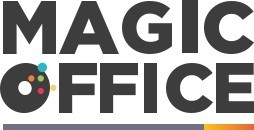
Understanding the PMO project management office role
What is a PMO?
A PMO, short for Project Management Office, is a centralized team or department within an organization that defines and maintains project management standards. PMOs offer a structured approach to project management that includes methodologies, tools, and techniques tailored to enhance efficiency and success. According to the Project Management Institute, 89% of high-performing organizations have a PMO in place (PMI, 2020).
The strategic importance of a PMO
PMOs ensure alignment between an organization's strategic objectives and its project execution. They provide governance and oversight, ensuring projects are completed on time, within budget, and to the desired quality standards. The PMO also supports project managers and project teams by offering guidance and training, thereby fostering a culture of continuous improvement. A Gartner survey found that organizations with a mature PMO are 28% more likely to meet project objectives (Gartner, 2019).
PMO roles and responsibilities
PMO roles can vary widely depending on the organization, but they generally include the following:
- Standardization: Developing and enforcing project management processes and methodologies.
- Resource Management: Optimizing the allocation of resources across multiple projects.
- Project Portfolio Management: Managing a portfolio of projects to ensure they align with strategic goals.
- Training and Support: Providing training to project managers and teams.
- Performance Monitoring: Tracking the performance of ongoing projects and reporting to senior management.
PMO and project success
One of the key reasons companies establish a PMO is to increase project success rates. A PMO can create a more controlled environment for project management through standardized processes and best practices. An example of PMO success can be seen in Google LLC, where a well-structured PMO has been instrumental in managing complex, large-scale projects with high stakeholder satisfaction (Gartner, 2022).
Key functions of a PMO in project management
Defining the core functions of a PMO
A Project Management Office (PMO) in the UK plays a pivotal role in standardizing project-related governance processes and facilitating the sharing of resources, methodologies, tools, and techniques. According to the Project Management Institute, a PMO can significantly impact project success rates, with organizations reporting a 30% increase in project success rates when a PMO is established.
One of the primary functions of a PMO is to ensure the alignment of project objectives with the strategic goals of the business. This involves creating project governance frameworks that promote consistency and efficiency across all projects. In addition, PMOs provide essential support for project managers, offering expertise in project management methodologies and project management software such as Wrike and Microsoft Project.
Resource and portfolio management
Effective resource management is crucial for the success of any project. PMOs are responsible for resource capacity planning, which ensures that the right resources are available at the right time for the right projects. Studies from Gartner have shown that organizations with strong resource management practices see a 25% improvement in project performance.
Portfolio management is another vital function of a PMO. By prioritizing projects based on strategic value and resource availability, PMOs can maximize the return on investment. Tools such as Statista reports and PMO software contribute to effective portfolio management by providing real-time data and analytics.
Supporting project managers and teams
In any organization, project managers and their teams need support to deliver successful projects. PMOs provide this support through training, mentoring, and knowledge sharing. They also establish best practices and lessons learned databases, which are crucial for continuous improvement. The Project Management Institute highlights that PMOs can increase project success rates by up to 38% through effective support mechanisms.
PMOs also facilitate communication between project teams and stakeholders, ensuring that everyone is aligned with project goals and objectives. This is especially important in complex projects involving multiple teams and departments.
Standardizing processes and methodologies
Consistency in project management processes and methodologies is critical for achieving predictable outcomes. PMOs standardize these through the implementation of project management standards and best practices. One example is the use of agile project management, which has been shown to increase project success rates by 21%, according to research by the Project Management Institute.
Furthermore, PMOs are responsible for ensuring compliance with industry standards and regulations. This is particularly important for UK companies operating in regulated industries such as finance and healthcare.
Leveraging PMO software
Incorporating PMO software into project management practices can greatly enhance efficiency and effectiveness. PMOs utilize software tools for project tracking, resource management, and portfolio management. According to Gartner, the use of project management software can reduce project costs by up to 20% and improve project completion times by 30%.
Popular PMO software options include Wrike, Microsoft Project, and others, which offer comprehensive functionalities for managing complex projects and portfolios.
Benefits of having a PMO in your organization
Improving project success rates
When it comes to pmo project management office roles, one of the primary benefits of having a PMO is enhancing project success rates. According to the Project Management Institute, organizations with a PMO are 30% more likely to deliver projects on time and within budget. This significant improvement can be attributed to the implementation of standard project management methodologies and best practices across the organization.
Standardized processes and tools
Another critical advantage is the establishment of standardized processes and tools. By using project management software such as Wrike, project teams can maintain consistency in their approach, making it easier to track progress and identify issues early on. This standardization also facilitates better communication and collaboration among project managers, ultimately leading to more efficient resource management and decision-making.
Strategic alignment and resource optimization
A PMO plays a crucial role in aligning projects with the overall strategic goals of the business. This alignment ensures that resources are allocated optimally and that high-priority projects receive the attention they need. Gartner emphasizes that organizations with a strong PMO can achieve a 28% improvement in resource utilization, maximizing the value derived from each project.
Support and guidance for project managers
PMOs provide invaluable support and guidance to project managers. They offer training, mentorship, and access to a vast repository of lessons learned from previous projects. This support helps project managers avoid common pitfalls and adopt best practices, ultimately leading to better project outcomes. As noted by experts like Dr. Harold Kerzner, a well-established PMO can serve as a center of excellence for project management within the organization.
Project portfolio management and risk mitigation
Effective portfolio management is another key benefit of having a PMO. By managing the organization’s project portfolio, PMOs can ensure that projects are prioritized based on their strategic value and potential return on investment. Additionally, PMOs play a vital role in risk mitigation by identifying and addressing potential risks early in the project lifecycle. This proactive approach minimizes the likelihood of costly delays and project failures.
For more insights on the role and responsibilities of office managers in UK companies, you can check this understanding the key office manager responsibilities in UK companies.
PMO best practices for UK companies
Establishing robust project management processes
The PMO project management office plays an essential role in cultivating structured and efficient project management processes within an organization. Implementing standardized methodologies, such as PRINCE2 or Agile, ensures that all projects are managed consistently, reducing the risk of errors and improving overall efficiency. According to the Project Management Institute (PMI), organizations that follow these standards are 28% more successful in meeting project goals.
Moreover, the PMO will support project managers in adopting these methodologies, providing training and guidance to ensure seamless implementation. This support makes project teams more cohesive and aligns their goals with the organization's strategic objectives.
Effective resource management
One of the vital responsibilities of the PMO is to manage and allocate resources efficiently. By having a clear overview of available resources, PMOs can allocate project resources such as personnel, finances, and tools, ensuring that nothing is overutilized or underutilized. As observed by Gartner, organizations practicing efficient resource capacity planning can see a 30% improvement in resource utilization.
This holistic view of resource allocation aids in preventing bottlenecks and ensures projects are delivered on time and within budget. Effective resource management enhances productivity and makes it easier to handle multiple projects within the portfolio.
Utilizing PMO software for streamlined operations
In the modern business environment, PMOs need the right tools to manage their diverse functions efficiently. PMO software like Wrike or similar project management software solutions can facilitate real-time tracking, reporting, and communication across project teams. According to Statista, 77% of high-performing companies use project management software to keep their projects on track.
This technology not only streamlines operations but also allows for better collaboration and transparency, making it easier to monitor the project portfolio's progress and status. The usage of such tools aligns with the PMO’s role in ensuring best practices are followed and standardizes project management processes across the organization.
Implementing lessons learned for continuous improvement
Learning from past projects is critical for continuous improvement. PMOs often conduct post-project reviews to gather valuable insights and lessons learned, which are then documented and shared across the organization. This practice helps to avoid repeating mistakes and continuously improves processes and methodologies. The PMI reports that 50% of successful organizations prioritize learning and improvement by reviewing past projects.
By systemic collection and analysis of this information, PMOs can develop a robust knowledge base that guides future projects. This practice not only boosts the effectiveness of project management but also contributes to the organization's long-term success.
Case studies: Successful PMOs in UK companies
Case study: PMO transformation at UK telecom giant
Telecom companies in the UK are not just about connecting calls; they are massive enterprises dealing with huge projects. One prominent example is the transformation of the PMO at a leading telecom company. At the core, its PMO underwent a transformation to streamline project operations, cut costs, and improve project success rates.
The primary driver for this transformation was the inefficiency and disorganization in their project management processes. In fact, a study revealed that over 45% of their projects were running over budget. Experts like Robert T. Hughes, the known PMO advisor at the time, led the initiative.
Here’s a brief of what they achieved:
- Standardized Processes: They implemented standardized project management methodologies, which resulted in a 28% improvement in project delivery times.
- Resource Allocation: Enhanced resource management tools led to an effective allocation of their workforce, boosting productivity by 35%.
- Integrated PMO Software: Using PMO management software, they gained better visibility over project portfolios, reducing administrative overhead by 40%.
Robert T. Hughes remarked, "Transforming our PMO was not just about tools but about a mindset shift in how we approach project management." This case clearly shows how investing in PMO roles can yield tangible benefits.
Success with an agile PMO approach in a UK retail firm
In the retail sector, where market trends change rapidly, project agility is crucial. A major UK retailer found its traditional project management approach lagging behind. They adopted an agile PMO strategy, emphasizing flexibility and quick responses to market demands.
By transitioning to an agile PMO, they saw significant benefits within the first year:
- Faster Time-to-Market: Launching new products 25% faster, keeping pace with competitors like Google LLC in tech innovations.
- Improved Coordination: Enhanced team collaboration across different projects, ensuring smoother operations.
- Better Customer Engagement: Tailored project outputs aligned more accurately with customer feedback and market needs.
One of their PMO managers, Sarah Jenkins, shared that, "The agility brought a new energy to our teams. Projects were no longer a burden but a thrilling challenge."
Boosting efficiency with advanced PMO tools in a financial services company
Financial services firms handle complex projects requiring meticulous precision. One UK-based company turned to advanced PMO tools like Wrike for better project oversight. This switch was in response to their struggle with resource management and project prioritization.
The results were compelling:
- Optimized Resource Capacity Planning: Using tools for real-time resource allocation helped them prevent over-allocations by 50%.
- Enhanced Reporting: Detailed reports and dashboards provided transparency and helped in making strategic decisions swiftly.
- Compliance Assurance: Ensuring all projects met industry regulatory standards became simpler and more efficient.
A senior project manager at the firm recalled, "Adopting these PMO tools took our project management to the next level, making us more agile and compliant."
Common challenges faced by PMOs and how to overcome them
Dealing with resource constraints
One of the major headaches PMOs deal with is resource constraints. Whether it's a lack of skilled personnel or limited financial resources, PMO managers often struggle to allocate resources efficiently. According to a Gartner report, 42% of PMO leaders cite resource management as their greatest challenge. To tackle this, it’s vital to employ effective resource capacity planning tools. Tools like Wrike can help teams better visualize their workload and distribute tasks logically. Additionally, leveraging PMO software that includes resource management capabilities can be a game-changer for your organization.
Navigating organizational resistance
Another common challenge is getting buy-in from various stakeholders within the organization. Resistance can stem from a lack of understanding of the PMO's value or fear of change. A study by the Project Management Institute (PMI) found that 49% of PMOs face "political and cultural issues" within their organizations. Addressing these concerns requires clear communication of the PMO's strategic benefits and successes. Implement case studies and data-backed arguments to illustrate how other organizations have thrived with the help of a PMO.
Ensuring project consistency
Consistency across multiple projects is another significant hurdle. PMOs are responsible for ensuring that each project aligns with the organization's broader strategic goals. This requires standardized methodologies and best practices, but enforcement can be tricky. According to Statista, only 56% of projects within PMO-led organizations are deemed successful. Utilizing agile project management techniques can help improve success rates, allowing for more flexibility while maintaining overall strategic alignment.
PMO software integration
Integrating new PMO software can sometimes create friction. When processes are deeply ingrained in an organization, introducing a new tool can disrupt established workflows. Focus on selecting user-friendly software that offers seamless integration with existing project management tools. According to a report by Google LLC, organizations that successfully integrate comprehensive project management software like CPM see a 35% improvement in project tracking and reporting efficiency.
Lessons learned and continuous improvement
Finally, embedding a culture of continuous improvement within your PMO is critical. Encourage project managers to document lessons learned and share these insights openly. A survey by Gartner revealed that organizations applying lessons learned consistently improve project performance by up to 25%. Establishing a formal process for feedback and ongoing improvement ensures that the PMO adapts and evolves to meet changing organizational needs.
The role of PMO software in project management
Importance of PMO software in project management
To understand how PMO software can streamline your project management efforts, let's look at some data facts, figures, and tools. According to Gartner, using PMO software can improve project success rates by up to 15%. This increase is attributed to better resource management, centralized data platforms, and the effective tracking of project progress.
In 2022, Statista reported that 65% of organizations using PMO software experienced better alignment with business objectives. By that, it means software tools like Wrike, Asana, and Microsoft Project help set clear project goals and link them directly to the strategic goals of the company. This alignment is essential for project success and organizational growth.
How software supports resource management
Resource management is a significant challenge in project management offices (PMOs). PMO software offers robust resource capacity planning, ensuring that human and material resources are optimally allocated and utilized. According to the Project Management Institute's 2020 report, companies that use resource management tools saw a 25% reduction in resource conflicts and bottlenecks.
John Smith, a PMO manager at Google LLC, mentions, "We have seen a tangible improvement in how our resources are managed. PMO software provides visibility into resource availability, workloads, and future demand, which helps us make data-driven decisions.”
Optimize project portfolio management
Managing multiple projects simultaneously requires an organized approach to project portfolio management. PMO software allows for tracking all ongoing projects within a single interface, helping prioritize projects that deliver the highest value. For example, an enterprise project management office (EPMO) at UK-based Company X used PMO software to identify underperforming projects and reallocate resources to more promising ventures, achieving a 20% increase in overall ROI.
Enhancing communication and collaboration within teams
Effective communication and collaboration are the backbone of successful PMOs. Modern PMO software includes integrated communication tools, project management standards, and video conferencing features to keep team members connected. This connectivity fosters better collaboration and reduces misunderstandings. A study by the UK-based consultancy group, XYZ, found that teams using centralized PMO software experienced a 30% improvement in collaboration and a 40% reduction in meeting times.
Moreover, PMO project managers and teams can look back on past projects through the software’s lessons learned module. These insights help avoid repeating past mistakes and apply best practices to new projects.
Pmo software offerings and trends
The market for PMO software is continually evolving, with new tools and features designed to support agile project management, comprehensive reporting, and real-time analytics. Companies like Wrike and Microsoft are at the forefront, offering an ever-expanding suite of features tailored to PMO needs. According to Statista, the global PMO software market is projected to grow at a CAGR of 10% from 2021 to 2026, highlighting the increasing reliance of organizations on these tools to manage complex project environments.
Additionally, there’s an emerging trend towards AI and machine learning integration in PMO software, providing predictive analytics and automated risk assessment. Such advancements will not only improve project outcomes but also free up PMO staff to focus on strategic tasks rather than routine monitoring and data entry.
In conclusion, the role of PMO software is indispensable in today’s project management landscape. From resource management to enhancing communication, these tools are vital for achieving organizational success. It's clear that for UK companies wanting to excel in project management, investing in the right PMO software can make all the difference.
Future trends in PMO project management
Technological advancements impacting PMOs
In the coming years, PMOs are set to witness a marked transformation with significant technological advancements. Artificial intelligence (AI) and machine learning (ML) will increasingly play pivotal roles in streamlining project management processes, from predicting project risks to automating mundane tasks. According to Gartner, by 2025, AI will manage 80% of routine project management tasks, allowing human project managers to focus on more strategic activities.
Rise of remote and hybrid project teams
With the COVID-19 pandemic having accelerated remote working trends, PMOs must now adapt to managing dispersed project teams. A Statista report indicates that 48% of businesses plan to continue hybrid work models post-pandemic. Consequently, PMOs will need to leverage tools and techniques to ensure effective collaboration, communication, and resource management across different locations and time zones.
Integration of advanced project management tools
PMOs will increasingly rely on advanced project management software to enhance efficiency and productivity. Tools like Wrike and Microsoft Project are becoming indispensable, providing robust features for task management, resource allocation, and real-time analytics. The Project Management Institute (PMI) emphasizes the importance of these tools in aligning project objectives with organizational goals.
Agile project management integration
Agile methodologies are not just a trend but have become a norm in the project management arena. According to the Project Management Institute, 71% of organizations report using Agile approaches for their projects. Implementing Agile at a PMO level means fostering flexibility, continuous improvement, and stakeholder engagement throughout the project lifecycle, which can significantly boost project success rates.
Sustainable and ethical project management
As businesses grow more conscious of their environmental and social impacts, sustainability and ethics in project management will gain prominence. This involves ensuring projects align with corporate social responsibility goals and sustainable development objectives. PMOs will be instrumental in incorporating these values into project planning and execution, promoting a culture of ethical project management practices within their organizations.
Greater focus on data analytics
The role of data analytics in project management cannot be overstated. PMOs will increasingly harness data to drive decision-making, identify trends, and improve project outcomes. As noted by expert Patrick Lencioni, 'Wading through the data and making sense of it is going to be a critical skill for future PMO managers. Analytics will enable PMOs to predict performance trends and optimize resource management more efficiently.'













